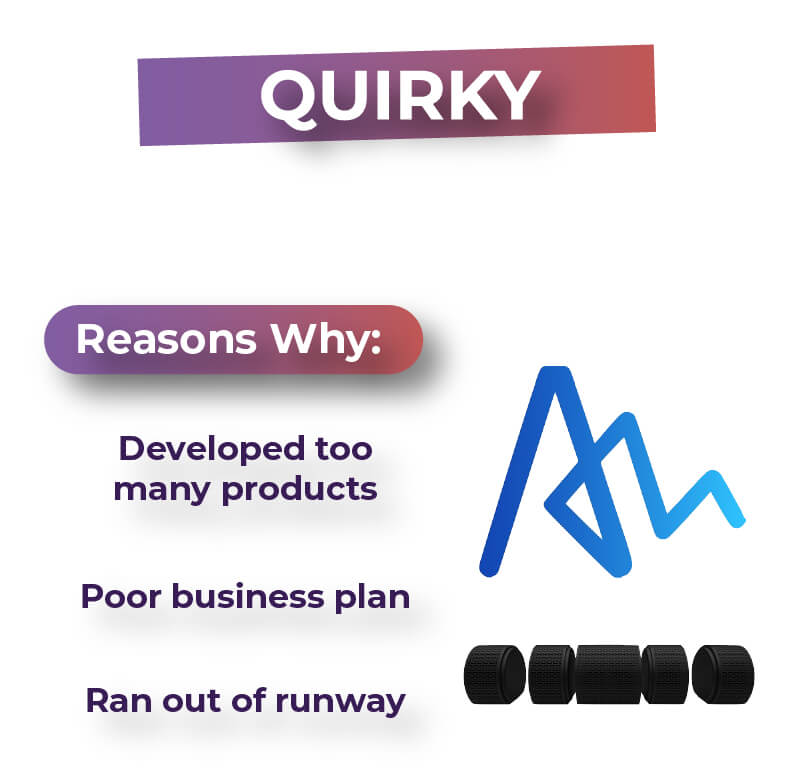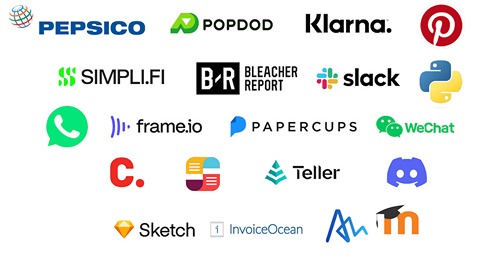
Can AI Really Let Product Managers Build Software Without Developers?


November 16, 2023 by Paul Byrne
Starting a new business often involves addressing a problem you’ve identified in the world and believing you have the solution. The journey of a startup founder is an inspiring one, filled with dreams, passion, and a desire to make a positive impact. However, it’s no secret that startups face numerous challenges, and one of the primary reasons for their failure is founders giving up. In this blog post, we’ll explore the factors that contribute to startup failure and how your choice of technology stack can make a significant difference.
The numbers aren’t exactly in a startup’s favor. According to Startup Genome Project, 90% of high-tech startups fail. 75% of startups fail within the first 4 years, and 30% - 40% of investors lose their entire investment. These numbers are sharp and drastic, but as Harj Taggar of Y Combinator rightly points out, startups often fail because their founders simply give up.
Numbers aside, some startups work AND go on to become big tech companies that shape the technological landscape as we have come to know it. So, it’s essential to delve deeper into the reasons behind why these companies have a tendency to fail. While there isn’t a one-size-fits-all answer to why startups fail, there’s a consensus on some common factors:
Failure to find a market.
The inability to achieve product-market fit. It often means that either your target audience doesn’t care about the problem as much as you do or they believe your solution isn’t the right one.
Ran out of Runway.
In the world of startups, the term “runway” isn’t just about where planes take off and land; it also refers to a critical aspect of business - cash. When you’ve run out of runway. It means you can no longer invest in your solution, and this is often the beginning of the end for many startups.
Hiring Problems.
Hiring the right talent is a common challenge. You need individuals who not only possess the necessary skills but also share your passion for your startup’s mission.
Better Competitors.
It is not uncommon for competitors to try and “steal” your customers. Often, this occurs when you define your target audience too broadly. Your solution might be great, but if it’s not tailored to the specific needs of your audience, you’re vulnerable to being outperformed.
Poor Business Plan.
Recognize that your initial business plan is a starting point, not a rigid blueprint. Stay nimble, be open to change, and make adjustments as you learn more about your market and audience. The most successful startups are those that can pivot and adapt to new information and circumstances. Remember, it’s not about having a perfect plan but about being a skilled business owner and leader who can navigate the twists and turns of entrepreneurship.
Poor Marketing.
Bad marketing can be recovered from. However, if you don’t have enough cash to weather a wasted marketing budget, you probably should have done a better job testing your ideas.
When it comes to technology, research shows that tech alone is responsible for about 6% of startup failures. However, the choice of your technology stack can impact multiple aspects of your startup, from development speed to scalability and cost-effectiveness.

Consider examples like Loon, which aimed to connect remote areas to the internet using balloon-based receivers. With 125 million dollars in funding, Loon was considered a breakthrough innovation backed by Google.
In the beginning, there was consistent progress against technical objectives. However, when the market shifted, they couldn’t pivot effectively. In addition to being unable to compete with Starlink, Loon had a poor market fit and scaled too soon.
Or, think about Quirky, which invested heavily in expanding its product line, leading to slower-than-expected sales. The company was intentionally created for professionals to network and discuss potential business ideas. Despite raising 169 million dollars in capital, Quirky failed due to a few reasons:
They developed too many products in a short period of time, and the revenues were too low.
The quality of products was difficult to manufacture and mediocre at best.
They had a poor business model.
Quirky was then sold for 4.5 million dollars.


Another intriguing example is ScaleFactor. The company aimed to automate and simplify financial processes for small businesses, but it struggled with issues like inadequate customer support, regulatory challenges, and technology limitations. Additionally, the company faced fierce competition in the crowded fintech market. These problems, coupled with rapid scaling ambitions, led to financial strains and operational inefficiencies.
Ultimately, ScaleFactor was unable to sustain its growth and meet the evolving needs of its customer base, contributing to its failure in the competitive landscape of financial technology When the AI component failed, they resorted to hiring human accountants, ultimately leading to their demise.
Click here to read more on failed tech startups and the reasonings behind their demise.
The lessons from these failures and some successes is that operations and product-development in a startup need to be flexible and cost-effective. Plan for patience and adjust your expectations, since startups typically take 2x - 3x longer to validate their market than founders expect. Learn to pivot tactfully, as startups that pivot 1x or 2x have 3.6 times user growth and raise 2.5 times more money than those that never pivot or pivot more than 2x.
A tech stack is the collection of technologies, programming languages, and tools that are used by a software application in order to function. It’s crucial to have the right technological tools at your fingertips, especially if you are relying on flexibility and efficiency from all aspects of your operations to achieve success.
The communication between development teams at different layers can create bottlenecks. In technology, a bottleneck refers to a point or component within a system, process, or infrastructure that limits the overall performance or throughput of the entire system. It acts as a constriction or bottleneck in the flow of data, information, or resources. When a bottleneck occurs, it often slows down the overall system, and the system’s performance is limited by the capacity of the bottlenecked component.
Identifying and addressing bottlenecks is a crucial aspect of optimizing technology systems to achieve better efficiency and performance. Common examples of bottlenecks in technology include a slow CPU in a computer, a congested network connection, or an overloaded database server.

When you don’t have the right tech solutions to support your business, your business cannot produce at an efficient level. This is why the right tech stack is so crucial for your business, and why the evolution of programming languages has led us straight to the fast-growing future, full of potential for start-ups and businesses who aren’t afraid to utilize them.
The choice of programming languages and frameworks matters too. Early languages like Java, while innovative, had limitations that hindered rapid innovation. Paul Graham observed that hackers preferred Python to Java because it allowed them to develop more quickly. Decades of slow language development has lead us into a new era of possibilities.

Elixir, a relatively new language, was developed to address the unique challenges of the internet. Combining the syntax of Ruby and the strengths of Erlang, Elixir offers robustness and can handle large concurrent connections. It minimizes the risk of system failures, a significant advantage for startups. Elixir is a fast-growing developer community and quick to learn. It adopts a phone switchboard mentality, allowing for call drops without crashing the server. Elixir is inherently scalable, both the front end and back end can be written in the same language, promoting code reuse, and it’s considered one of the most secure open-source web development languages.
Companies like Razoyo chose Elixir for their SaaS products, which handle unpredictable server loads and complex integrations without crashes. Learn more about how Razoyo uses Elixir here. The reduced hosting costs and increased performance also allowed them to invest in customer support and product improvements.

Our first SaaS ideation to scaled application
Market fit
Pivoted on features multiple times
Available in multiple app stores
Elm on front end
Pivoting approach to Phoenix Results
Predominant system for firearm Checkout compliance
Extremely low cost hosting
No downtime 3+ years

Background
Hotel revenue analysis consultancy wanted to pivot to SaaS
Daily data ingestion process (ELT) was error prone and too slow
Could not add new clients
Solution
Moved from monolith running on MS SQL to Elixir + Google Big Data
Results
ELT process went from 24 hour consultant-led to 2 hour automated
Able to add new accounts quickly
10,000+ SaaS concurrent users
Founder sold the company to investors and spent his time in Southern France
“Elixir saved Pinterest over $2 million per year in server costs”
“The performance and reliability of the systems went up despite running on drastically less hardware”

The technology stack you choose for your startup can significantly impact its success or failure. It affects everything from development speed to operational costs. Learning from real-world examples and embracing innovative solutions like Elixir can give your startup a competitive advantage, making it more resilient and adaptable in the face of challenges. So, when you’re building your startup, remember that your tech stack is not just a technical choice but a strategic one that can shape the future of your business.
These links open AI platforms with pre-written prompts about this page.
Orange Lightest Background
Orange Light Background
Orange Medium Background
Orange Dark Background
Orange Darkest Background
Purple Lightest Background
Purple Light Background
Purple Medium Background
Purple Dark Background
Purple Darkest Background
We use cookies to improve your experience. Do you accept?
To find out more about the types of cookies, as well as who sends them on our website, please visit our cookie policy and privacy policy.